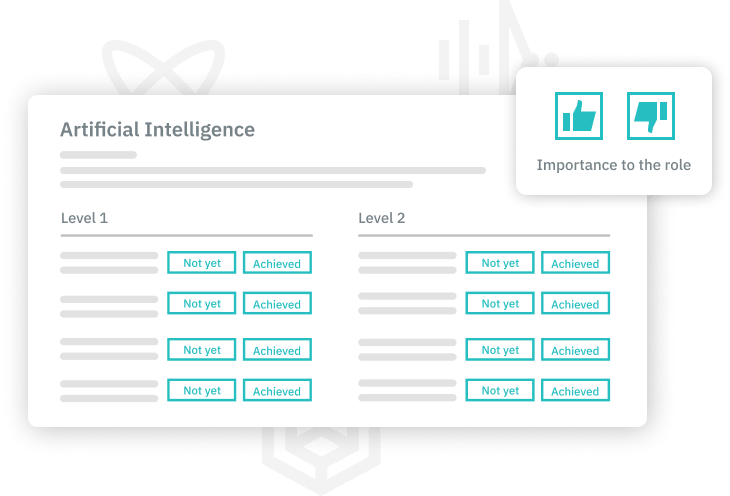Mastering Job Architecture for Business Success

A well-structured job architecture is no longer optional—it’s essential. High-level HR leaders understand that staying competitive and effectively managing a workforce requires more than traditional HR processes. Job architecture, often discussed in HR circles, is far more than a buzzword; it’s a transformative framework that organizes roles to align workforce strategies with organizational goals.
By categorizing, titling, and leveling positions across an organization, job architecture drives consistency and transparency. It sets the stage for workforce planning, career development, and scalability, enabling companies to thrive in a complex talent landscape. Here’s how mastering job architecture can unlock new levels of business success.
Why Job Architecture Matters
Inconsistent job roles, unclear titles, and redundant responsibilities are recipes for employee disengagement and turnover. Employees need clarity about their roles and growth opportunities to remain engaged and productive. A well-defined job architecture provides this clarity by:
- Standardizing roles and responsibilities.
- Offering transparent career paths.
- Ensuring equity and alignment across teams.
For HR leaders, job architecture creates a unified framework that makes it easier to manage talent, align compensation strategies, and foster an equitable workplace. The result? A workforce that’s empowered, engaged, and aligned with business objectives. A defined job architecture fosters transparency, equity, and alignment, making it easier to manage and develop talent in line with business needs.
The Foundation: Auditing and Aligning Job Roles
Mastering job architecture begins with a comprehensive audit of current job roles. This foundational step identifies redundancies, inconsistencies, and emerging roles that need formal recognition. Key questions to guide this process include:
- Are job titles consistent across locations and departments?
- Do job descriptions reflect actual responsibilities and skills?
- Are there outdated or redundant roles that need streamlining?
Automated tools, such as TalentGuard’s Intelligent Role Studio, can significantly enhance this process by providing real-time insights and reducing administrative burden. These tools not only streamline the audit but also lay the groundwork for future scalability.
Building Consistency: Normalizing Job Titles
Growth often leads to a proliferation of inconsistent job titles, particularly after mergers or expansions. Normalizing job titles ensures that similar roles are recognized equally, improving alignment across the organization. For example, standardizing “Software Engineer” and “Developer” into a single title creates a cohesive framework that supports pay equity, performance tracking, and career progression.
This step enhances both workforce planning and employee engagement by providing a clear understanding of how individual roles fit into the broader organizational structure.
Structuring Progression: Job Levels and Families
A strong job architecture includes defined job levels and families, which group roles by function (e.g., Finance, Marketing, Engineering) and outline career progression paths. This structured approach:
- Clarifies opportunities for advancement within job families.
- Encourages skills development for both lateral and vertical growth.
- Aligns employee aspirations with organizational needs.
For instance, an engineering job family might include levels such as Junior Engineer, Engineer, Senior Engineer, and Lead Engineer. Each level represents increased responsibilities, competencies, and expertise, offering employees a transparent roadmap for growth.
Aligning Skills with Business Goals
Once job families and levels are in place, aligning skills and competencies with each role ensures that expectations are clear and measurable. This alignment supports personalized development plans, upskilling, and reskilling—key priorities for organizations facing rapid market changes.
For HR leaders, this structure bridges the gap between employee growth and business goals, ensuring that talent strategies are proactive rather than reactive. It also prepares the organization for upskilling and reskilling initiatives, which are essential for adapting to future business demands.
The Challenges of Implementing Job Architecture Manually
Manually implementing job architecture can be daunting, particularly for large organizations. The process involves complex data management, significant time investment, and the risk of inconsistencies. Automated tools, such as TalentGuard’s WorkforceGPT and Talent Frameworks, simplify this process by:
- Streamlining job catalog management.
- Automating role standardization.
- Integrating skills and competencies seamlessly.
By leveraging automation, HR leaders can focus on strategic initiatives while ensuring accuracy and scalability.
Leveraging TalentGuard for an Efficient Job Architecture Implementation
A well-defined job architecture brings structure, transparency, and alignment to talent management. It empowers employees with clear career pathways while equipping organizations with the agility to adapt to evolving market demands.
TalentGuard offers cutting-edge tools and expertise to help you build or update your job architecture efficiently. From job catalog management to skill integration, our solutions enable you to unlock the full potential of your workforce.
If you’re ready to take the next step in building or mastering job architecture, try a demo of TalentGuard today. Let us help you unlock the full potential of your workforce.
See a preview of TalentGuard’s platform
Importance of a Standardized Taxonomy
The importance of a standardized taxonomy is crucial in shaping effective talent management within an organization. This structured framework offers a consistent way to define and categorize job roles, skills, and competencies across departments, providing a common language and aligning employees and leadership with clear expectations. When implemented effectively, a standardized taxonomy enhances talent development, recruitment, […]

